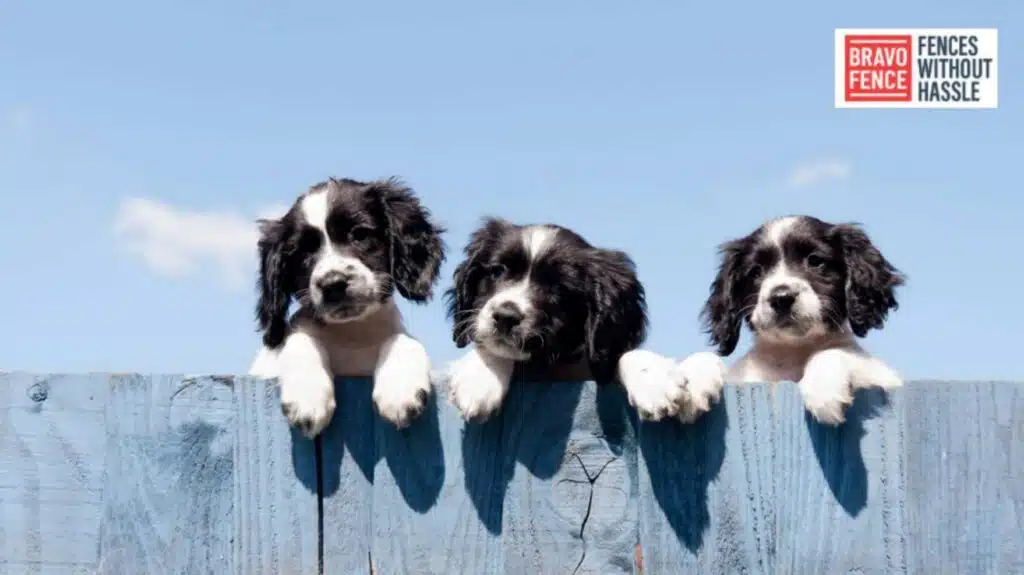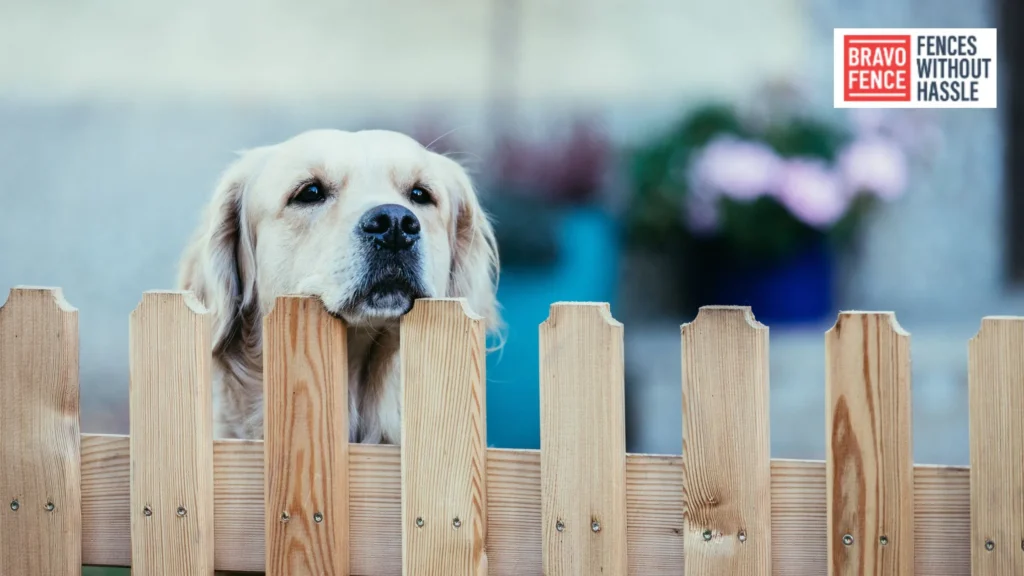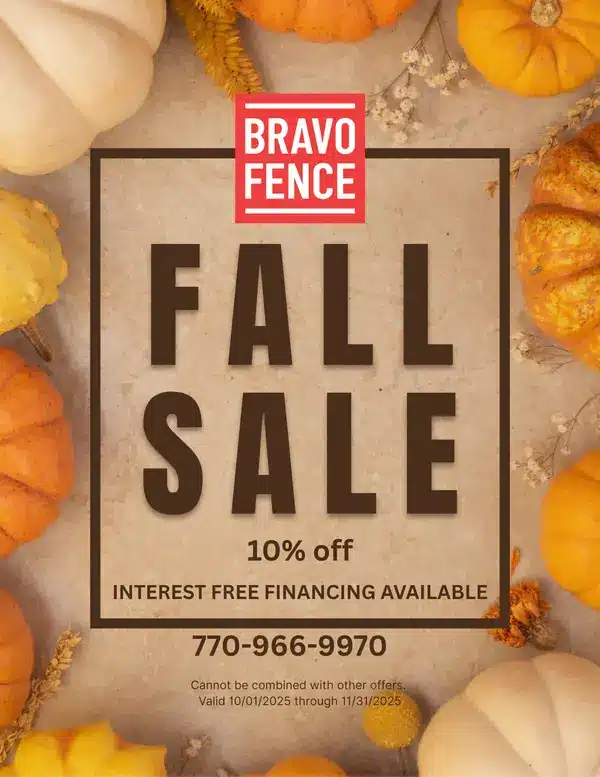
5 Things for Dog Owners to Consider About Fences
When it comes to keeping your furry friend safe and secure, a fence is often an essential part of the equation.
Whether you’re considering installing a new fence or upgrading an existing one, there are several important factors to consider.
This article explores five key aspects that dog owners should keep in mind when choosing and maintaining a fence for their canine companions.
Fence Type and Material
The type and material of the fence you choose will have a significant impact on its effectiveness and durability.
Here are some popular options:
Wood Fences: Traditional and versatile wood fences can be customized to fit various styles and heights.
They offer a natural look but may require regular maintenance, including painting or staining, to prevent rot and weather damage.
Vinyl Fences: Vinyl is a low-maintenance alternative to wood.
It is resistant to weather conditions and does not require painting.
However, it can be more expensive upfront and might offer a different aesthetic appeal than wood.
Chain Link Fences: Chain link fences are affordable and durable.
They provide a clear view of the surroundings, but there may be better options if you’re looking for privacy or if your dog is prone to escaping through gaps.
Electric Fences: Electric or invisible fences offer a high level of flexibility and can cover large areas. They
use a collar that emits a shock when the dog approaches the boundary.
While effective, they may not be suitable for all dogs, especially those with behavioral issues or low pain tolerance.
Metal Fences: Wrought iron or aluminum fences are sturdy and durable, often used for decorative purposes.
They are expensive but offer a high level of security and aesthetic appeal.
When choosing a fence, consider your dog’s size, energy level, and tendency to dig or climb.
A taller, more secure wall may be necessary for larger or more active dogs, while a lower fence suffices for smaller or less active dogs.
Height and Depth
The height of your fence is crucial for preventing your dog from jumping over it.
The recommended height for most dogs is at least 4 to 6 feet.
However, high-jumping breeds like Border Collies or German Shepherds may require a taller fence.
In addition to height, the depth of the fence is equally essential.
Dogs, especially those with strong digging instincts, can dig underneath a fence to escape.
To prevent this, the wall should extend at least 6 to 12 inches below ground level.
In some cases, adding a buried barrier or “apron” of fencing material that extends outward from the base can further deter digging.
Gate Design and Security
A well-designed gate is essential for both functionality and security.
Ensure that the gate is as sturdy and secure as the rest of the fence.
Consider the following features:
Latch Type: Choose a latch that is secure and difficult for dogs (or potential intruders) to manipulate.
The latch should be placed high enough to be out of reach of your dog.
Self-Latching Mechanism: A gate that automatically latches shut can prevent accidental escapes.
This is particularly useful if you often forget to secure the gate after use.
Gate Size and Accessibility: Choose a gate size that allows for easy access for yourself and any equipment you may need to bring in and out.
The gate should be wide enough for convenience but not so vast that it compromises security.
Reinforcement: For added security, reinforce the gate with additional hardware or a higher-grade material.
Maintenance and Durability
Regular maintenance is essential to keep your fence in good condition and ensure its longevity.
The type of fence material will influence the maintenance requirements:

Wood Fences: Inspect for signs of rot, damage, or loose boards.
Apply paint or stain regularly to protect against weather damage.
Vinyl Fences: Clean with soap and water to remove dirt and stains.
Check for cracks or other damage that may require repair.
Chain Link Fences: Inspect for rust or damage.
Replace any broken links or sections as needed.
Metal Fences: Check the fence regularly for rust or corrosion, especially if it is exposed to harsh weather conditions.
If necessary, apply rust-resistant paint.
In addition to material-specific maintenance, ensure that the fence remains free of debris and that there are no gaps or weaknesses that could compromise security.
Local Regulations and HOA Guidelines
Before installing a fence, it’s important to check local regulations and homeowners’ association (HOA) guidelines.
Many communities have specific rules regarding fence height, style, and placement.
Adherence to these regulations can result in fines or the requirement to remove or alter your fence.
Permits: Check with your local zoning office or municipal authority to determine if you need a license for fence installation.
Some areas require permits for any new fence construction, while others may have specific requirements based on the type or height of the fence.
HOA Rules: If you live in a community with an HOA, review their guidelines on fences.
HOAs often have specific rules regarding fence design, materials, and color to ensure that the wall complements the overall aesthetic of the neighborhood.
Property Lines: To avoid disputes with neighbors, ensure that the fence is installed within your property lines.
You may need to consult a surveyor to confirm property boundaries before installation.
Conclusion
Choosing the right fence for your dog involves careful consideration of various factors, including the type and material of the fence, its height and depth, gate design and security, maintenance needs, and local regulations.
By taking these aspects into account, you can ensure that your fence provides a safe and secure environment for your furry friend while also meeting your needs and preferences.
Remember, the best fence is one that combines functionality, durability, and aesthetics while also adhering to any applicable rules and regulations.
With the right approach, you can create a secure and enjoyable space for your dog to roam and play freely.
For more information and assistance, you can visit us at Bravo Fence Company.
FAQs
What is the best type of fence for my dog?
The best type of fence depends on your dog’s size, breed, and behavior. For active or large dogs, a sturdy option like a tall wood, metal, or vinyl fence is ideal. Smaller or less active dogs might do well with a chain link or lower fence. Electric fences can be effective but may not suit all dogs, especially those with behavioral issues.
How tall should a fence be to contain my dog?
For most dogs, a fence should be at least 4 to 6 feet tall. High-jumping breeds may require a fence that is even taller to prevent them from escaping.
How can I prevent my dog from digging under the fence?
To prevent digging, the fence should extend 6 to 12 inches below ground. Adding a buried barrier or an “apron” of fencing material that extends outward from the base can also help deter digging.
What should I look for in a secure gate?
A secure gate should have a high latch that dogs or intruders cannot easily manipulate. It should also have a self-latching mechanism to prevent accidental escapes. Ensure the gate is wide enough for accessibility but not so broad that it compromises security.
How do I maintain my fence?
Maintenance depends on the fence material:
Wood: Inspect for rot or damage and apply paint or stain regularly.
Vinyl: Clean with soap and water and check for cracks.
Chain Link: Inspect for rust or damage and replace broken sections.
Metal: Check for rust or corrosion and apply rust-resistant paint as needed.
Are there any regulations or guidelines I need to follow when installing a fence?
Yes, you should check local regulations and homeowners’ association (HOA) guidelines. These may include rules about fence height, style, and placement. You may also need a permit for installation and should ensure the fence is within your property lines to avoid disputes.
Can a fence keep my dog safe from other animals?
A well-constructed fence can help keep your dog safe from other animals by creating a physical barrier. However, the effectiveness of the fence depends on its height and material. For added protection, consider using materials that are resistant to climbing or digging, and ensure the fence is maintained to prevent gaps.
How do I choose the suitable fence material for my climate?
Different materials have varying durability in other climates. For instance, wood fences may require more maintenance in humid or rainy climates due to rot, while vinyl and metal fences are more resistant to weather conditions. Consider your local climate when choosing a material to ensure long-term durability.
What should I do if my dog is able to escape despite the fence?
If your dog escapes, first inspect the fence for gaps, loose areas, or weaknesses. You may need to increase the height of the wall, add a barrier to prevent digging or reinforce any weak spots. Additionally, consult a professional if necessary to address persistent escape issues.
How can I make my fence more visually appealing while keeping it functional?
You can enhance the appearance of your fence by choosing decorative materials or adding elements like latticework, planters, or trellises. Ensure that any enhancements do not compromise the fence’s security. Consult with a professional for design ideas that blend aesthetics with functionality.
Tags: Complete Guide to Dog Care, Complete Guide to Home Improvement For Pets, Complete Guide to Yard Fencing, Explore Helpful Resources on Pet Friendly Fences, Explore Helpful Resources on Pet Safety, Inspiration and Tips on Dog Owners, Top Ideas and Insights About Dog Fences

